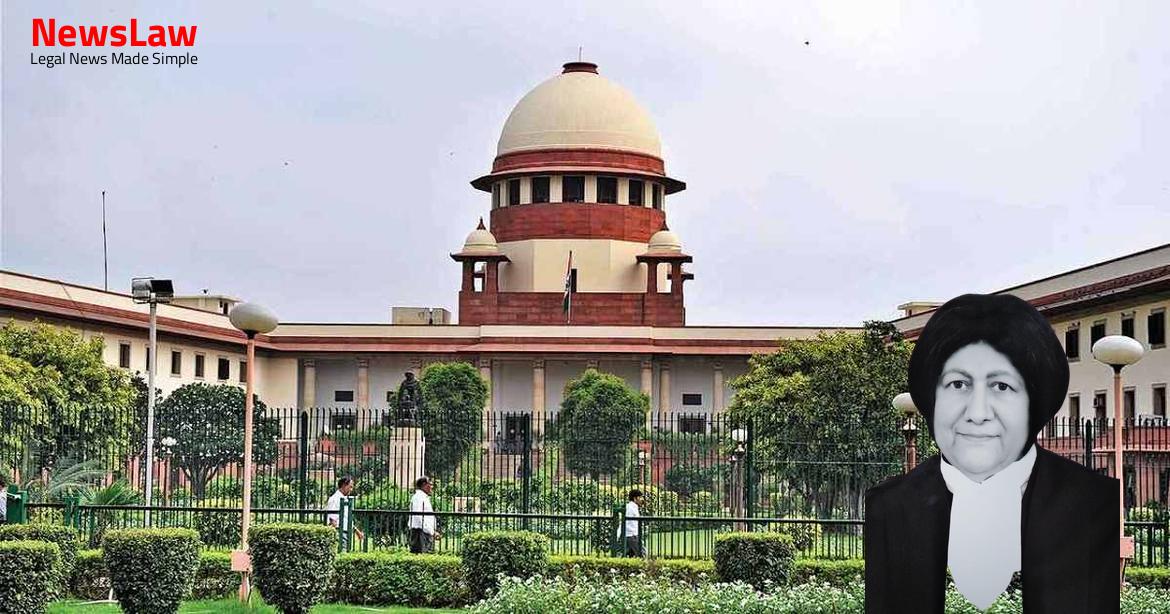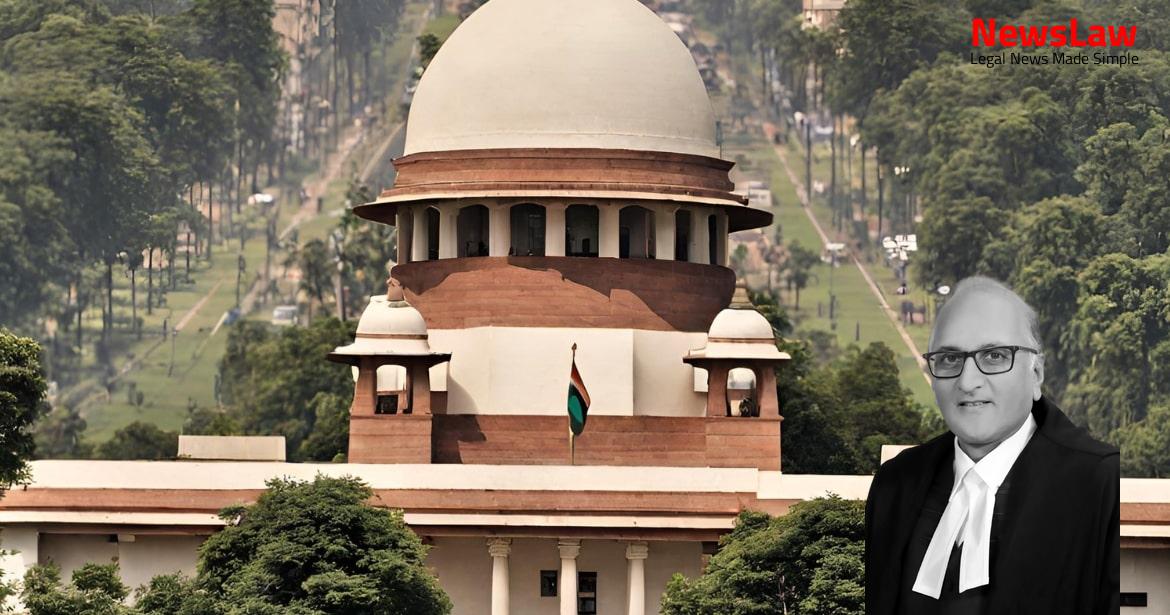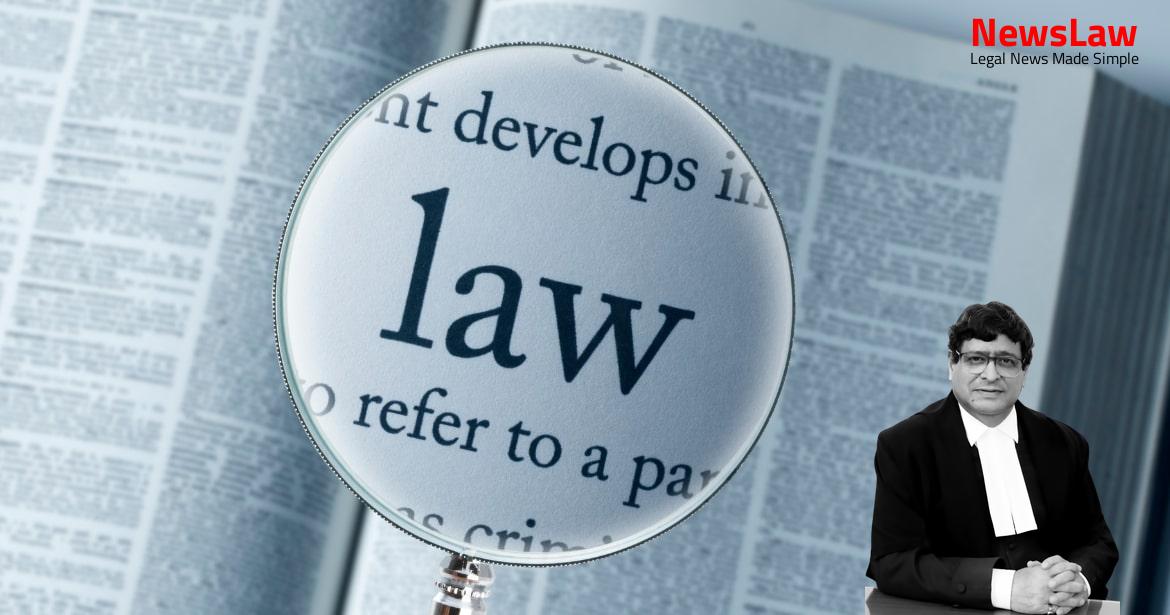In a significant legal case involving the Second Respondent and the State of India, the Supreme Court of India delivered a crucial judgment on age determination and juvenility claims. The case delved into discrepancies in documents like driving licenses and Aadhaar cards in comparison to the matriculation certificate. This summary highlights the importance of accurate age determination in the context of the Juvenile Justice Act and the procedural aspects governing such claims.
Facts
- The JJB and Sessions Judge held that the second respondent was an adult on the date of the incident.
- A revision was filed by the second respondent in the High Court of Judicature at Allahabad, which was later withdrawn.
- High Court disposed of a petition under Section 482 of the Code of Criminal Procedure 1973 directing the early disposal of the pending application of the respondent.
- The JJB rejected the claim of juvenility based on a medical report and the applications for a driving license and Aadhaar card which declared the date of birth as 17 December 1995.
- High Court allowed the revision and declared the second respondent as a minor on the date of the alleged offence by giving precedence to the matriculation certificate over other evidence of date of birth.
- The High Court considered the provisions of the Act of 2000 and Rule 12 of the Juvenile Justice (Care and Protection of Children) Rules 2007 as interpreted by the Supreme Court in previous cases.
- The High Court noted discrepancies in documents like driving license, Aadhaar card, voter’s ID, and mark sheets regarding the date of birth of the second respondent.
- The Sessions Judge rejected an appeal based on the credibility and authenticity of documents, considering the circumstances of each case.
- The Act of 2000 has been repealed by the Juvenile Justice (Care and Protection of Children) Act 2015, which came into force on 31 December 2015.
- The High Court gave precedence to the date of birth indicated in the matriculation certificate over other conflicting documents.
- Matriculation certificate issued by CBSE reflects the date of birth as 17 December 1998.
- An application was filed by the accused claiming to be a juvenile at the time of the incident.
- The Juvenile Justice Board declared the accused as a juvenile on the date of the alleged offense.
- Medical examination report stated that the accused was about nineteen years old.
- A criminal appeal was filed before the Court of the Sessions Judge, Firozabad regarding the age determination of the accused.
Arguments
- Mr. Ravindra Singh, representing the second respondent, argues that the discrepancies in the cross-examination of the former Manager of the school raise doubts about the authenticity of the certificate.
- The date of birth in the school register of Saket Vidya Sthali, Jedajhal, where the second respondent studied, is noted as 17 December 1995.
- The learner’s driving license, driving licence, and Aadhaar card of the second respondent all reflect the date of birth as 17 December 1995.
- These documents were obtained after the second respondent voluntarily disclosed the date of birth as 17 December 1995.
- No record of the date of birth was provided by the second respondent’s father at the time of admission.
- The affidavit filed by CBSE in the proceedings is mentioned to support the arguments of the second respondent.
Also Read: CRPF Act: Validity of Rule 27 for Compulsory Retirement – Case of Head Constable vs. CRPF
Analysis
- Clause (a) of Rule 12(3) outlines the documents necessary for seeking evidence in an enquiry related to age determination.
- The documents required are: (i) matriculation or equivalent certificate, (ii) date of birth certificate from the first school attended if (i) is not available, and (iii) birth certificate from a corporation, municipal authority or panchayat if (ii) is also unavailable.
- Section 7 A of the Act of 2000 explains the procedure to be followed when a claim of juvenility is raised before a court.
- The court is mandated to conduct an enquiry, gather evidence, and determine the age of the individual claiming juvenility.
- In the case at hand, evidence suggests that the date of birth of the concerned individual is 17 December 1995 based on investigation records.
- Rule 12(3) of the Rules of 2007 provides the procedural provision for age determination by the Court or Board.
- The rule requires the Court to conduct an inquiry, collect evidence, and record a finding on whether the person is a juvenile or a child.
- The judgment discusses the importance of determining the age of a juvenile accused in the context of the Juvenile Justice Act of 2015.
- The Court emphasizes the significance of the matriculation certificate in establishing the date of birth of the accused juvenile.
- It is noted that the school records and documents like Aadhaar card and driving license should align with the date of birth mentioned in the matriculation certificate.
- The Court highlights the procedural aspects outlined in Section 94 of the Act, which govern the determination of the age of the accused juvenile.
- The comparison between the rules under the Act of 2015 and the earlier rules under the Act of 2000 is discussed to provide clarity on the age determination process.
- The judgment stresses the need for a careful examination of the available documents and records to ascertain the accurate date of birth of the accused juvenile.
- The Court also discusses the role of different types of certificates, such as birth certificates from schools and municipal authorities, in determining the age of the accused juvenile.
- The decision in Abuzar Hossain alias Gulam Hossain was rendered on 10 October 2012.
- The decision in Ashwani Kumar Saxena was rendered on 13 September 2012.
- Rule 12(3) was noticed in the two-judge Bench decision of this Court in Ashwani Kumar Saxena.
- Justice KSP Radhakrishnan highlighted that the procedures of the CrPC cannot be directly applied while determining juvenility claims under the Rules of 2007.
- It was acknowledged that the date of birth recorded in official documents may sometimes be inaccurate.
- In cases where documents are proven to be falsified, the reflected date of birth should be disregarded.
- The date of birth of the second respondent was proven to be 17 December 1995.
- The second respondent was not eligible for juvenility claim on the date of the alleged incident (18 August 2015).
- The records from Saket Vidya Sthali school indicate a different date of birth than the one claimed by the second respondent.
- The date of birth on Aadhaar card and driving licence does not hold credibility.
- The High Court decision to rely solely on the matriculation certificate to reverse the Sessions Judge’s findings was erroneous.
Also Read: DAMEPL vs. DMRC: Curative Petition and Arbitral Award Restoration
Decision
- The appeal has been allowed and the impugned judgment and order of the High Court dated 14 November 2018 have been set aside.
- Criminal Revision 2952 of 2017 has been dismissed as a consequence.
- The order of the Sessions Judge, which confirmed the decision of the Juvenile Justice Board (JJB) rejecting the claim of juvenility, has been maintained.
- The individual in question will be dealt with according to the law based on the finding in this judgment rejecting the claim of juvenility.
Case Title: SANJEEV KUMAR GUPTA Vs. THE STATE OF UTTAR PRADESH
Case Number: Crl.A. No.-001081-001081 / 2019



